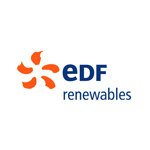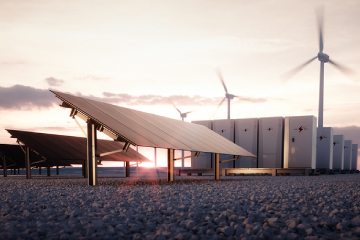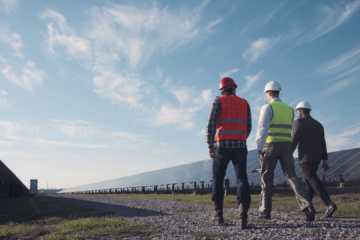- About UsAbout UsWe’re committed to providing future generations with the means to power their lives in the most economic, environmental and socially responsible ways possible.
- What We DoWhat We DoWe are a market-leading, independent power producer and service provider, delivering: wind (onshore and offshore), solar photovoltaic, storage, and electrical vehicle charging.
- Landowners
- Suppliers
- Projects
- Careers
- News
- Contact
Powering Sustainability with Green Tariffs

By Joni Hamson, Senior Director, Origination
EDF Renewables North America
As concerns about the impacts of climate change continue to rise, an increasing number of commercial and industrial (C&I) energy buyers are seeking to improve the sustainability of their operations and reduce their carbon footprint by sourcing their electricity from renewable generation like wind and solar. This interest represents a major opportunity for utilities and other energy providers to introduce green tariff offerings or expand their existing green tariff to meet customer needs and embrace a clean energy future.
Taken in the broadest sense, a green tariff is a program through which an energy provider such as an investor-owned utility, municipal utility or electric cooperative offers its C&I customers the option to contract for a defined amount of renewable generation to meet their energy needs.
For example, a manufacturer with 100 megawatts (MW) of annual load could subscribe to a green tariff under which their electricity provider allocates 100 MW of wind generation exclusively to that customer. The customer, in turn, can legitimately claim that 100 percent of their energy needs are met with carbon-free renewable energy.
Green tariffs are a subset of what is sometimes called the voluntary market for renewable energy, so named to distinguish it from the compliance market which is driven by procurement obligations set under renewable portfolio standard (RPS) programs.
Growth in the C&I voluntary market has been strong—the Renewable Energy Buyers Alliance (REBA) tracked 79 large-scale renewable energy deals totaling 9.33 gigawatts (GW) of power in the U.S. last year. Bloomberg NEF puts the figure at 13.6 GW, more than the global total in 2018. BNEF estimates that 80% of these contracts (11.2 GW) were virtual power purchase agreements (VPPAs), and that the remaining 20% (2.4 GW) were purchased under green tariffs.
This 2.4 GW of green tariff purchases represents a tiny fraction of what has the potential to be a huge market. The alternative—conventional or virtual PPAs—are a great option for large, sophisticated buyers with significant annual load, appetite for negotiating complex contracts, and the ability to properly evaluate and manage the associated risk. For most small to mid-size (and even some large) C&I customers however, the simplicity of purchasing renewable energy through a green tariff is much more appealing.
Savvy utilities understand the growth potential of the C&I market and have shaped innovative programs to meet their customers’ needs. Examples include the green tariffs offered by Xcel Energy, Georgia Power, DTE, and Evergy. Key features that have contributed to the success of these programs include competitive pricing, simplicity, and the sustainability characteristics of the renewable energy sources.
With a 16 GW portfolio of clean energy projects developed across North America, EDF Renewables serves the needs of both voluntary and compliance buyers in over 35 states. In addition to PPAs with individual clients like Google, San Diego Zoo, BASF, Salesforce and Kimberly-Clark, we also supply renewable power to green tariff programs run by the investor-owned utilities, cooperatives, municipals and power agencies. My role involves identifying and structuring renewable energy transactions for both voluntary and compliance buyers. C&I buyers of all sizes are hungry for more and effective green tariff programs, and I encourage energy providers to follow the leadership of their peers and explore the potential to expand their customer offerings in this area. It is clear that this is where the market is headed, and forward-thinking utilities will be rewarded for committing to this new future.
- © 2025 EDF Renewables North America
- Privacy Policy
- AB 1305 Disclosure
- TCFD Report


